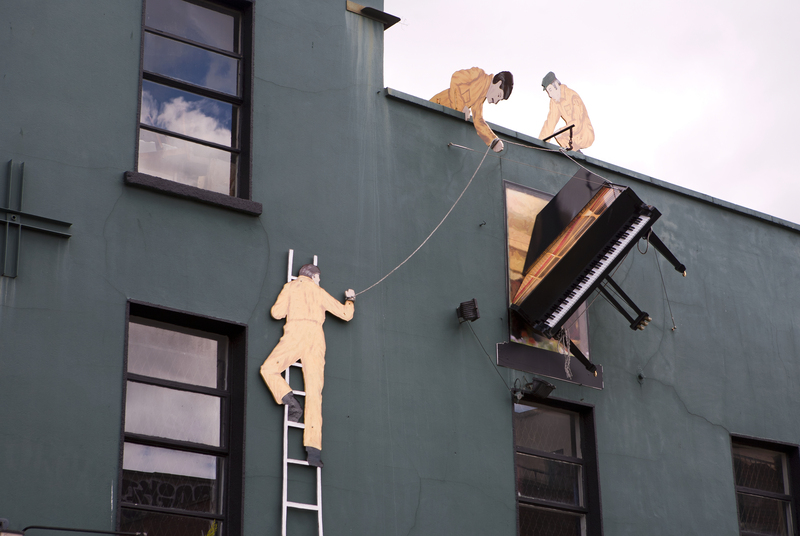The Key Steps to Packing Success During a Move
Posted on 06/06/2025
The Key Steps to Packing Success During a Move
Whether you're moving just across town or relocating to another state, the packing process can easily become overwhelming. With countless belongings to manage and a strict timeline to adhere to, successful packing is an essential component of any smooth move. But what exactly are the key steps to packing success during a move? In this comprehensive guide, you'll discover actionable, organized, and proven strategies to make your transition seamless, reduce stress, and protect your belongings from start to finish.

Why Proper Packing is Essential for a Successful Move
Poorly packed boxes can result in damaged items, unorganized chaos, and significant frustration on moving day. Successfully packing for a move isn't just about stuffing items into boxes--it's about strategic preparation, proper labeling, thoughtful organization, and safe transport. Implementing the right packing steps ensures your belongings arrive intact and your unpacking process is hassle-free.
Step 1: Start With a Personalized Moving Plan
Assess Your Unique Packing Needs
Before you place a single item in a box, take time to evaluate your entire home. Identify special items requiring extra care, items that might be discarded, and belongings you'll need immediately upon arrival. Creating a customized packing checklist helps prioritize tasks and delegates responsibilities if moving with others.
- List high-value or fragile items.
- Pinpoint rooms or spaces that require extra organization.
- Determine packing timelines for each area of your home.
Gather Packing Supplies in Advance
Gathering quality supplies beforehand is a crucial step to moving success. You'll need:
- Sturdy boxes in various sizes
- Bubble wrap or packing paper
- Packing tape
- Permanent markers for labeling
- Moving blankets or furniture pads
- Scissors or a box cutter
- Zip-top bags for small parts or hardware
Don't forget: Having the right supplies enables efficient, safe, and stress-free packing for your move!
Step 2: Declutter Your Belongings
Packing Less Means Moving More Efficiently
One of the best-kept secrets to packing success during a move is to declutter ruthlessly before packing begins. The less you have to pack, the easier and cheaper your move will be.
- Sort through each room: Create "Keep," "Donate," "Sell," and "Discard" piles.
- Be honest about unused items: If you haven't used something in over a year, consider letting it go.
- Dispose of hazardous or expired items: This includes old cleaning products, paints, or expired canned goods.
You'll save time, space, and money on moving supplies--and you'll start fresh in your new home!
Step 3: Organize and Pack Per Room
Focus Packing Room-by-Room
To achieve packing success during relocation, tackle packing one room at a time. This keeps similar items together, streamlines unpacking, and drastically reduces misplaced belongings.
- Begin with least-used areas: Storage rooms, guest rooms, and seasonal closets are ideal starting points.
- Work towards everyday spaces: Kitchens, bedrooms, and bathrooms should be packed last.
- Use a consistent labeling system--this is key for quick identification in your new home.
Pro Packing Tips For Each Space
- Kitchen: Wrap fragile dishes individually. Use dish packs or extra padding for glassware.
- Bedrooms: Keep sets of bedding together. Wardrobe boxes make moving clothes easier.
- Bathroom: Seal opened toiletries to prevent spills. Pack an essentials bag for first-night needs.
- Living Room: Protect electronics in original boxes if possible. Use moving blankets for large furniture.
Step 4: Label Everything Clearly
The Secret Ingredient to Smooth Unpacking
Labeling boxes is more important than most realize. A clear labeling system not only helps movers know where to place boxes but also enables you to find necessities fast when you arrive. Here's how to label like a pro:
- Color-code by room: Assign a different colored marker or tape for each room.
- Write contents and destination room: Example: "Kitchen - Plates and Glasses."
- Include handling instructions such as "Fragile" or "This Side Up".
- Number boxes: This makes it easier to track boxes and ensure none are missing.
Step 5: Pack Smart and Safely
Use Packing Techniques That Protect Your Possessions
Proper packing techniques dramatically increase your chances of a successful move. Prevent damage and wasted space by packing methodically:
- Heaviest items on the bottom: Prevents crushing delicate possessions.
- Fill all empty spaces: Use towels or crumpled packing paper for stability.
- Keep boxes under 50 pounds: Reduces risk of injury or box breakage.
- Avoid overfilling: Boxes that bulge are more likely to collapse.
Take extra care with fragile and precious items! Use bubble wrap, foam, or specialty boxes for fine china, antiques, or electronics. For artwork and TVs, consider custom-fitted boxes and mark "Fragile" on all sides.
Step 6: Prepare an Essentials Box
Your First-Night Survival Kit
The key to your moving day comfort is a well-packed essentials box. This box (or suitcase) should remain with you during the move and be the last thing packed and the first thing opened.
- Medications and toiletries
- Important documents (IDs, lease, moving contracts)
- Basic kitchen items: one pot, dishes, utensils, snacks, beverages
- Chargers and essential electronics
- Change of clothes and pajamas
- Pet supplies if needed
Having your essentials handy minimizes anxiety and searches on your first night in the new space.
Step 7: Protect Large Items and Furniture
Take Apart, Wrap, and Secure
Disassemble large furniture where possible to make transportation easier and safer. This includes bed frames, tables, and shelving units. Store screws and hardware in clearly labeled zip-top bags and tape them securely to the respective furniture.
- Wrap furniture in moving blankets or stretch wrap to avoid scratches.
- Cover mattresses with protective bags.
- Use corner guards for delicate wooden pieces or picture frames.
- Don't forget to protect your floors during the packing and loading process with drop cloths or old sheets.
Step 8: Stay Organized Right Up to Moving Day
Keep a Master Inventory and Checklist
A strong foundation for successful packing and moving is maintaining an up-to-date inventory of boxes and major items. This helps track your belongings, provides peace of mind, and is invaluable for insurance claims should loss or damage occur.
- Itemize box contents, preferably in a notebook or digital spreadsheet.
- Check off boxes as they are loaded onto the truck--and again when you arrive at your destination.
- Keep important documents and contracts in a dedicated folder that is always accessible.
Pro Packing Tips for Moving Day Success
- Don't rush the process--give yourself ample time for each packing stage.
- Pack an emergency kit with phone chargers, cash, snacks, and water for moving day.
- Enlist help from friends, family, or professional movers for heavy lifting or complicated items.
- Take photos of electronics setups before dismantling for easy reassembly.
- Keep valuables and sentimental items with you rather than in the moving truck.

Frequently Asked Questions About Efficient Packing for a Move
1. How far in advance should I begin packing for a move?
Begin packing at least four weeks before your move date for optimal organization and reduced stress. Start with items you use least frequently, and leave everyday essentials for last.
2. What items should not be packed in a moving truck?
Avoid packing valuables, important documents, perishable foods, sensitive electronics, medications, and live plants in the moving truck. Keep these items with you during the move.
3. How do I keep fragile items safe during my move?
Individually wrap all fragile items using bubble wrap or packing paper, pack them snugly to avoid movement, and clearly label their boxes as "Fragile." Consider double-boxing for added protection.
4. How can I make unpacking easier at my new home?
Effective labeling and grouping items by room will make unpacking much smoother. Unpack the essentials box first--then prioritize high-use areas like the kitchen and bedrooms.
5. Should I hire professional packers?
If you have limited time, many high-value items, or just want a stress-free experience, hiring professional packers is highly worthwhile. They bring packing expertise and high-quality materials, guaranteeing packing success during your move.
Conclusion: Achieve Moving Success With Strategic Packing
Packing for a move doesn't have to be chaotic or stressful. By following the key steps to packing success during a move outlined above--from upfront planning and organized decluttering to smart labeling, safe packing methods, and a thorough checklist--you'll transform your moving day experience. Prioritize preparation, organization, and protection at every turn, and you'll ensure your belongings arrive safe, sound, and ready for your new adventure.
Are you planning a move soon? Bookmark this comprehensive guide, and tackle your journey with confidence using these best practices for packing success during a move. Happy moving!









